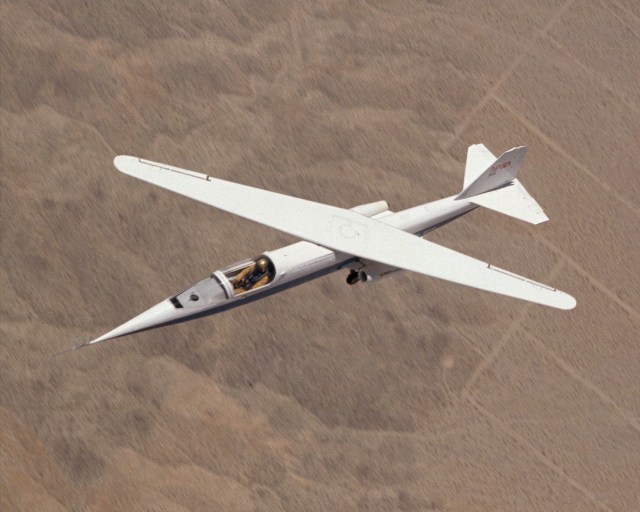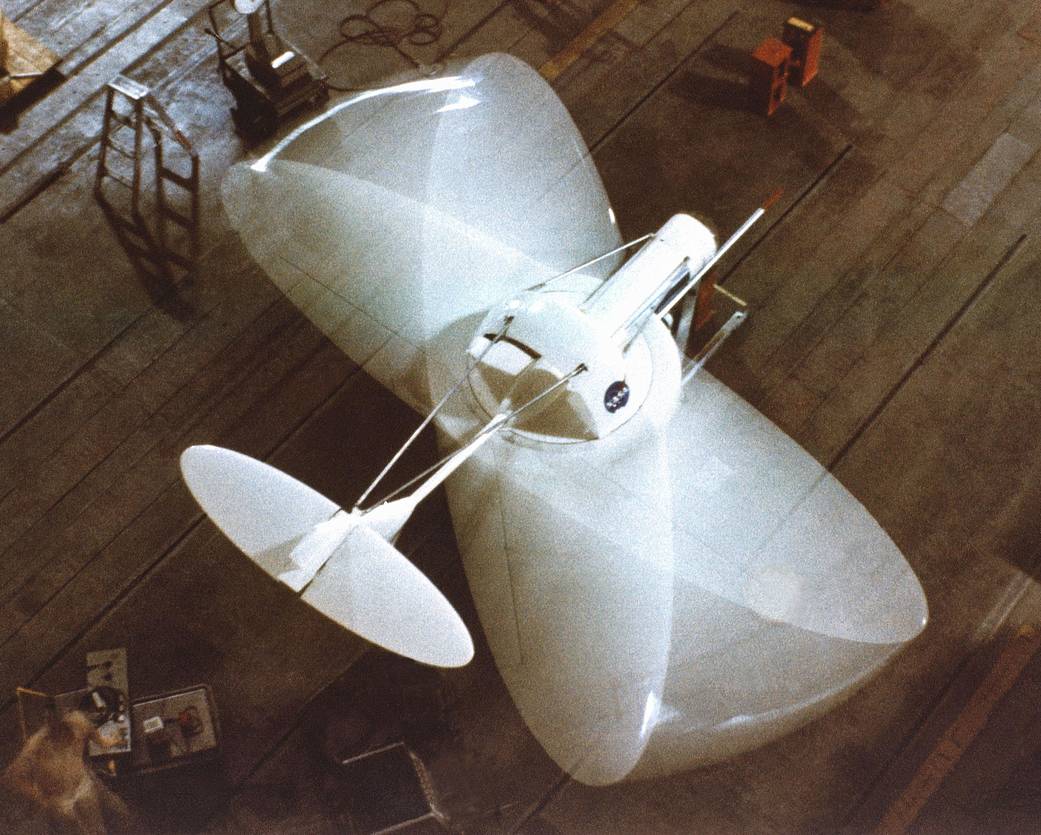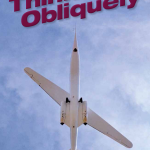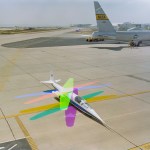AD-1 Oblique Wing

The Ames-Dryden AD-1 was designed to investigate the concept of an oblique (or pivoting) wing. The AD-1 wing could be rotated on its center pivot so that it could be set at its most efficient angle for the speed at which the airplane was flying, hence the name ‘oblique.’
The oblique wing was the brainchild of NASA aeronautical engineer Robert T. Jones, whose analytical and wind tunnel studies at the NASA Ames Research Center, Moffett Field, California, indicated that an oblique wing, supersonic transport might achieve twice the fuel economy of an aircraft sporting more conventional wings.
Also called the “scissors” wing, it was an offshoot of the variable-sweep-wing concept first investigated with the X-5 during the early 1950’s. Variable-sweep wings allow an aircraft to take advantage of the lift and handling qualities of a straight wing during the comparatively slow flight of takeoffs and landings, and the reduced drag and the better efficiency of swept-back wings during high speeds and cruise speeds. Variable-sweep wings used common on many high performance aircraft, including the F-14, F-111, and B-1, but the concept is fading now. The wing pivoting mechanisms are heavy because they must be so robust, adding wsignificant weight penalties.
The swing wing concept was first tested by flying the instrumented Oblique Wing Research Aircraft, a small, propeller-driven, remotely-piloted research vehicle (RPRV) flown at Dryden in 1976. These early techniques for gathering data about the oblique wing aircraft were applied to the twin turbojet, piloted AD-1, which was flown from 1979 to 1982.
Research pilots at the Dryden (now Armstrong) Flight Research Center in Edwards, California, flew the little plane a total of 79 times. Although the oblique wing is still considered a viable concept for large transports, the unpleasant flying characteristics of the AD-1 at extreme wing-sweep angles may have discouraged aircraft designers from adopting this configuration.































